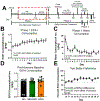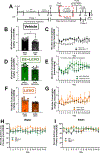Synthetic contraceptive hormones occlude the ability of nicotine to reduce ethanol consumption in ovary-intact female rats
- PMID: 37778097
- PMCID: PMC11577355
- DOI: 10.1016/j.drugalcdep.2023.110983
Synthetic contraceptive hormones occlude the ability of nicotine to reduce ethanol consumption in ovary-intact female rats
Abstract
Rates of tobacco and alcohol use in women are rising, and women are more vulnerable than men to escalating tobacco and alcohol use. Many women use hormonal birth control, with the oral contraceptive pill being the most prevalent. Oral contraceptives contain both a progestin (synthetic progesterone) and a synthetic estrogen (ethinyl estradiol; EE) and are contraindicated for women over 35 years who smoke. Despite this, no studies have examined how synthetic contraceptive hormones impact this pattern of polysubstance use in females. To address this critical gap in the field, we treated ovary-intact female rats with either sesame oil (vehicle), the progestin levonorgestrel (LEVO; contained in formulations such as Alesse®), or the combination of EE+LEVO in addition to either undergoing single (nicotine or saline) or polydrug (nicotine and ethanol; EtOH) self-administration (SA) in a sequential use model. Rats preferred EtOH over water following extended EtOH drinking experience as well as after nicotine or saline SA experience, and rats undergoing only nicotine SA (water controls) consumed more nicotine as compared to rats co-using EtOH and nicotine. Importantly, this effect was occluded in groups treated with contraceptive hormones. In the sequential use group, both LEVO alone and the EE+LEVO combination occluded the ability of nicotine to decrease EtOH consumption. Interestingly, demand experiments suggest an economic substitute effect between nicotine and EtOH. Together, we show that chronic synthetic hormone exposure impacts nicotine and EtOH sequential use, demonstrating the crucial need to understand how chronic use of different contraceptive formulations alter patterns of polydrug use in women.
Keywords: Contraceptive hormones; Economic substitute; Ethanol; Ethinyl estradiol; Levonorgestrel; Nicotine.
Copyright © 2023 The Author(s). Published by Elsevier B.V. All rights reserved.
Conflict of interest statement
Declaration of Competing Interest None.
Figures





References
-
- Acheson A, Mahler SV, Chi H, de Wit H, 2006. Differential effects of nicotine on alcohol consumption in men and women. Psychopharmacology (Berl) 186(1), 54–63. - PubMed
-
- Amit Z, Smith BR, 1985. A multi-dimensional examination of the positive reinforcing properties of acetaldehyde. Alcohol 2(2), 367–370. - PubMed
-
- Aragon CM, Abitbol M, Amit Z, 1986. Acetaldehyde may mediate reinforcement and aversion produced by ethanol. An examination using a conditioned taste-aversion paradigm. Neuropharmacology 25(1), 79–83. - PubMed
-
- Barrett SP, Tichauer M, Leyton M, Pihl RO, 2006. Nicotine increases alcohol self-administration in non-dependent male smokers. Drug Alcohol Depend 81(2), 197–204. - PubMed
Publication types
MeSH terms
Substances
Grants and funding
LinkOut - more resources
Full Text Sources
Miscellaneous

